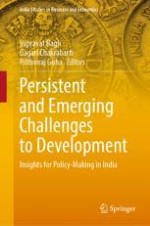2022 | OriginalPaper | Buchkapitel
2. Asymmetric Quality Effect of Input Trade Liberalization
verfasst von : Shrimoyee Ganguly, Rajat Acharyya
Erschienen in: Persistent and Emerging Challenges to Development
Verlag: Springer Nature Singapore
Aktivieren Sie unsere intelligente Suche, um passende Fachinhalte oder Patente zu finden.
Wählen Sie Textabschnitte aus um mit Künstlicher Intelligenz passenden Patente zu finden. powered by
Markieren Sie Textabschnitte, um KI-gestützt weitere passende Inhalte zu finden. powered by
